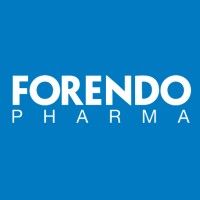预约演示
更新于:2025-07-05
Fispemifene
非培米芬
更新于:2025-07-05
概要
基本信息
在研机构- |
最高研发阶段终止临床2期 |
首次获批日期- |
最高研发阶段(中国)- |
特殊审评- |
登录后查看时间轴
结构/序列
分子式C26H27ClO3 |
InChIKeyNKZTZAQIKKGTDB-QPLCGJKRSA-N |
CAS号341524-89-8 |
关联
4
项与 非培米芬 相关的临床试验NCT02443090
An 8-Week Randomized, Double-Blind, Placebo-Controlled Study to Evaluate the Safety and Efficacy of Oral Fispemifene for the Treatment of Sexual Dysfunction in Hypogonadal Men
To evaluate the safety and efficacy of fispemifene in men with secondary hypogonadism and sexual side effects.
开始日期2015-05-01 |
申办/合作机构 |
NCT01061970
Efficacy and Safety of Fispemifene in the Treatment of Hypogonadal Men With Chronic Obstructive Pulmonary Disease That Are on Oral Glucocorticoid Therapy: A 4-Week, Randomized, Double-Blind, Placebo-Controlled Study
The objective of the study is to assess and compare the preliminary efficacy, safety and tolerability of fispemifene 300 mg and placebo given once daily for 4 weeks in the treatment of hypogonadal men with chronic obstructive pulmonary disease (COPD) that are on oral glucocorticoid therapy.
开始日期2007-01-01 |
申办/合作机构 |
NCT00415571
Efficacy and Safety of Fispemifene in the Treatment of Hypogonadal Men With Erectile Dysfunction Unresponsive to PDE5 Inhibitors: An 8-Week, Randomized, Double-Blind, Placebo-Controlled Study
The objective of the study is to assess and compare the preliminary efficacy, safety and tolerability of fispemifene 300 mg and placebo given once daily for 8 weeks in the treatment of hypogonadal men with erectile dysfunction (ED) unresponsive to PDE5 inhibitors.
开始日期2006-12-01 |
申办/合作机构 |
100 项与 非培米芬 相关的临床结果
登录后查看更多信息
100 项与 非培米芬 相关的转化医学
登录后查看更多信息
100 项与 非培米芬 相关的专利(医药)
登录后查看更多信息
4
项与 非培米芬 相关的文献(医药)2024-11-01·JOURNAL OF MOLECULAR LIQUIDS
Evaluation of tamoxifen analogues as potential estrogen receptor alpha inhibitors for breast cancer treatment: A computational approach
作者: Balpande, Atharva ; Therkar, Yashasvi ; Tripathi, Satyendra Chandra ; Deshpande, Shilpa ; Khanwani, Nikhil ; Dashputra, Anushka ; Patil, Ganesh C. ; Kuthe, Abhaykumar M. ; Ravikumar, C. ; Wasewar, Aryan ; Kannaiyan, Surendar
Estrogen receptors, particularly ERα, play a key role in breast cancer progression, making them prime targets for therapeutic intervention.Tamoxifen (TAM), a selective estrogen receptor modulator (SERM), has been widely used for the treatment of ER+ breast cancer; however, its clin. application is limited by side effects and the emergence of resistance.This study aims to identify and evaluate TAM analogs with improved efficacy and reduced side effects by employing mol. docking and mol. dynamics (MD) simulations.Droloxifene, endoxifen, and afimoxifene emerged as promising candidates, exhibiting strong binding affinities with ERα, as indicated by highly neg. binding energy (BE) values in docking simulations.MD simulations further validated the stability of the complexes formed between these analogs and ERα, with low root mean square deviation (RMSD) values and stable radius of gyration (Rg) profiles.Root mean square fluctuation (RMSF) anal. revealed balanced flexibility, with droloxifene and afimoxifene showing optimized flexibility for stable binding.Hydrogen bond anal. indicated more stable interactions between these analogs and ERα compared to TAM, suggesting enhanced binding affinity.MM/GBSA binding free energy anal. confirmed the high affinity of these analogs, with droloxifene displaying the most effective binding free energy (ΔGtotal) value.ADMET profiling suggests that droloxifene and endoxifen have superior pharmacokinetic properties relative to TAM.Overall, droloxifene, endoxifen, and afimoxifene represent promising alternatives to TAM, with the potential for further clin. development in breast cancer treatment.Exptl. validation in cell-based and in vivo models will be crucial in future studies to confirm their efficacy and safety profiles.
2008-10-01·The Journal of pharmacology and experimental therapeutics3区 · 医学
Fispemifene [Z-2-{2-[4-(4-Chloro-1,2-diphenylbut-1-enyl)-phenoxy]ethoxy}-ethanol], a Novel Selective Estrogen Receptor Modulator, Attenuates Glandular Inflammation in an Animal Model of Chronic Nonbacterial Prostatitis
3区 · 医学
Article
作者: Yatkin, Emrah ; Lammintausta, Risto ; Santti, Risto ; Bernoulli, Jenni
The anti-inflammatory and antiestrogenic action of fispemifene [Z-2-{2-[4-(4-chloro-1,2-diphenylbut-1-enyl)phenoxy]ethoxy}-ethanol], a novel selective estrogen receptor modulator (SERM), was tested on the Noble rat model of chronic nonbacterial prostatic inflammation with cellular composition and inflammation patterns similar to those described in human prostatitis. Inflammation was assessed by counting perivascular and stromal infiltrates and the number of inflamed acini. Furthermore, the aggressiveness of inflammation was assessed on the basis of the relation of lymphocytes to the acinar epithelium. The immunohistochemical expression of progesterone receptor (PR) and Fos-related antigen 2 (Fra2), prolactin concentration in serum, and the weights of the seminal vesicles and pituitary glands were used as endpoints of estrogen action. Fispemifene significantly attenuated the glandular form of inflammation induced in the dorsolateral prostatic lobes (DLP) in the hormonal milieu of the decreased androgen/estrogen ratio. The anti-inflammatory action was seen in the decreased number of acini containing intraluminal neutrophils. As signs of antiestrogenic action, fispemifene blocked estrogen-induced expression of PR and Fra2 in the acinar epithelium of the DLP, and it decreased prolactin concentration in serum and the relative weights of the seminal vesicles and pituitary glands. Because fispemifene exhibited both antiestrogenic and anti-inflammatory action in the prostate, this experimental study suggests that SERMs could be considered as a new therapeutic option in the treatment and prevention of prostatic inflammation.
2007-01-26·Theoretica chimica acta
Automated docking of estrogens and SERMs into an estrogen receptor alpha and beta isoform using the PMF forcefield and the Lamarckian genetic algorithm
作者: G. Kiss ; N.W. Allen
A diverse set of estrogens and selective estrogen receptor modulators (SERMs) whose relative binding affinities (RBAs), with respect to 17β-estradiol are known, are automatically docked into a particular estrogen receptor alpha and beta (ERα and ERβ) in silico, utilizing the Lamarckian genetic docking algorithm and the potentials of mean force (PMF) function.After division into distinct classes (estrogens, SERMs), the ligands are ranked based upon the calculated ligand:receptor interaction energies, as well as exptl. RBAs.Comparison of both rankings shows good agreement within the distinct ligand classes.The presented results indicate that the PMF may be applied to the estrogen receptor:ligand complexes, and the ranking of ligands within distinct classes is a very useful pre-screening tool for development of novel estrogen receptor ligands.
4
项与 非培米芬 相关的新闻(医药)2019-08-20
Forendo Pharma announces initiation of dosing in a Phase 1b clinical study in its lead endometriosis program with the aim to demonstrate Proof of Mechanism.
Turku, Finland, August 20
th
2019:
Forendo Pharma
, a clinical stage drug development company focusing on novel treatments in women’s health, today announces initiation of dosing in a Phase 1b clinical study in its lead endometriosis program with the aim to demonstrate Proof of Mechanism. The novel oral compound, FOR-6219, is a HSD17B1 inhibitor aiming to reduce estrogen production locally in the endometriosis lesions. The first women participating in the study have been dosed.
Earlier this year, the first-in-human Phase 1a study of FOR-6219 was successfully completed. Single doses from 2mg up to 175mg and multiple doses up to 150mg twice daily over 10 days were found to be safe and well tolerated in 36 healthy postmenopausal women. The pharmacokinetics of FOR-6219 was dose-proportional and steady state was reached within 3 days. The observed elimination half-life was around 16-18 hours, offering potential for once daily dosing. The pharmacokinetic pro FOR-6219 was similar in a fasted and fed state indicating that FOR-6219 can be administered with or without food.
In the on-going Phase 1b study FOR-6219 is given to premenopausal women to explore the effect of FOR-6219 on the endometrium by measuring changes in endometrial thickness and endometrial estrogen levels. In addition to these local effects, systemic hormone levels will also be measured. Other endpoints are based on safety and tolerability.
Risto Lammintausta, CEO of Forendo Pharma, said:
“The commencement of the Phase 1b study marks an important milestone for the company as we aim to demonstrate Proof of Mechanism for this novel concept in premenopausal women for the first time. The selective ability of FOR-6219 to inhibit local estrogen production in the endometrium and endometriotic lesions, without suppressing systemic estrogen levels, is unique and expected to be the key differentiator against competing endometriosis therapies. If we can demonstrate this new mechanism in healthy premenopausal women, we will have a solid basis to study FOR-6219 in endometriosis patients who need better long-term treatment alternatives for this chronic and high burden disease”.
For further information, please contact
:
Risto Lammintausta
CEO, Forendo Pharma Oy
risto.lammintausta@forendo.com
Tel: +358 (0)40 310 8010
Mary Clark, Hollie Vile
Optimum Strategic Communications
healthcare@optimumcomms.com
Tel: +44 (0) 203 950 9144
NOTES TO EDITORS
About Forendo Pharma
Forendo Pharma is a privately held drug development company, with core competences in modulating tissue specific hormone mechanisms. The company was founded in 2013 by leading academic endocrinology experts and Finnish drug development pioneers. Forendo is supported by strong international investors: Novo Seeds, Karolinska Development, Innovestor, Novartis Venture Fund, M Ventures, Vesalius Biocapital III Partners and Sunstone Life Science Ventures. The company’s pipeline includes HSD17B1 inhibitor (phase I) for the treatment of endometriosis; inhibitor of another enzyme from the HSD17B family for the treatment of undisclosed gynecological condition (discovery); and Fispemifene (phase 2), a novel SERM for the treatment of male urological conditions. Further information is available at
.
About FOR-6219
FOR-6219 is the first drug that aims for a targeted effect in endometriosis lesions without effecting systemic estrogen. The clinical compound FOR-6219 inhibits the conversion of low potency estrone into highly potent estradiol in endometrial tissues. The most important expected differentiator of FOR-6219 compared to currently available treatments is its selective activity and the ability to act locally in the target tissues, without impacting systemic hormone levels. This selective activity allows a safe and well tolerated, long term treatment opportunity for endometriosis. Positive Phase 1a results were reported in March 2019. [
phase-1a-results-of-for-6219/
]
About Endometriosis
Endometriosis is a chronic condition that affects up to 10% of women in reproductive age and causes repeated pain symptoms, infertility and impaired quality of life. Currently available treatments for endometriosis have limitations in efficacy or cause harmful side effects. They often lead to systemic estrogen depletion, with known safety issues on bone mineral density and menopausal symptoms. There is no known cure for the disease.
Download a pdf about endometriosis
临床1期临床2期临床结果
2019-07-21
Turku, Finland, July 19th 2019: Forendo Pharma, a clinical stage drug development company focusing on novel treatments in women’s health, announces that Sunstone Life Science Ventures has made a €5 million investment in Forendo.
Turku, Finland, July 19th 2019:
Forendo Pharma
, a clinical stage drug development company focusing on novel treatments in women’s health, today announces that
Sunstone Life Science Ventures
has made a €5 million investment in Forendo. Sunstone joins the existing international investor syndicate comprising Novo Seeds, Karolinska Development, Innovestor, Novartis Venture Fund, M Ventures and Vesalius Biocapital III. Claus Andersson, General Partner from Sunstone, joins Forendo Pharma’s Board of Directors.
The new financing will enable Forendo Pharma to progress its lead endometriosis program, FOR-6219, an oral small molecule HSD17B1 enzyme inhibitor, into the next phase of clinical studies after the successful completion of its Phase 1a study earlier this year.
Endometriosis is a chronic condition that affects many women of reproductive age and causes repeated pain symptoms, infertility and impaired quality of life. Currently available treatments for endometriosis have limitations in efficacy and/or cause significant side effects, due to systemic estrogen depletion. Forendo’s novel HSD17B1 inhibitor is the first drug that aims for a local effect in endometriosis lesions without affecting systemic estrogen.
Risto Lammintausta, CEO of Forendo Pharma, said:
“We are very pleased to welcome Sunstone as a new investor and Claus to our Board of Directors. Forendo’s women’s health portfolio is starting to reveal the potential of the HSD17B enzyme family in medicine and receiving increased attention from the industry and investors alike. With our increased investor support, we now are in a strong position to progress and expand our clinical program with our lead molecule.”
Claus Andersson, General Partner from Sunstone, added:
“Sunstone sees women’s health as an area of trending popularity with immense need for investment. Endometriosis is a perfect example, as approximately 8% of all pre-menopausal women are affected, suffering moderate to severe pain, infertility and impaired quality of life. We are very pleased to make this first investment under our new Fund IV, which earlier this year had its first closing at €80 million, and with a target of €150 million at final closing.”
For further information, please contact
:
Risto Lammintausta
CEO, Forendo Pharma Oy
risto.lammintausta@forendo.com
Tel: +358 (0)40 310 8010
Mary Clark, Hollie Vile, Anne Marieke Ezendam
Optimum Strategic Communications
healthcare@optimumcomms.com
Tel: +44 (0) 203 950 9144
NOTES TO EDITORS
About Forendo Pharma
Forendo Pharma is a privately held drug development company, with core competences in modulating tissue specific hormone mechanisms. The company was founded in 2013 by leading academic endocrinology experts and Finnish drug development pioneers. Forendo is supported by strong international investors: Novo Seeds, Karolinska Development, Innovestor, Novartis Venture Fund, M Ventures, Vesalius Biocapital III Partners and now Sunstone Life Science Ventures. The company’s pipeline includes HSD17B1 inhibitor (phase I) for the treatment of endometriosis; inhibitor of another enzyme from the HSD17B family for the treatment of undisclosed gynecological condition (discovery); and Fispemifene (phase 2), a novel SERM for the treatment of male urological conditions. Further information is available at
.
About Sunstone Life Science Ventures
Sunstone Life Science Ventures is an independent European venture capital investment firm founded in 2007 by an international team of industry experts with combined entrepreneurial, operational and financial experience. Sunstone focuses on developing and expanding early-stage pharmaceutical companies with strong potential to achieve global success in their markets. Since the inception, Sunstone has invested in more than 40 companies and has completed more than 20 successful IPOs and large M&A transactions. Managing total funds of approx. €500 million, Sunstone Life Science Ventures is one of the largest European venture capital investors.
临床1期临床2期
2019-03-08
Forendo Pharma today announces that it has successfully completed Phase 1a study of FOR-6219, an HSD17B1 inhibitor for the treatment of endometriosis.
Turku, Finland, March 7 2019:
Forendo Pharma
, a clinical stage drug development company focusing on novel treatments in women’s health, today announces that it has successfully completed Phase 1a study of FOR-6219, an HSD17B1 inhibitor for the treatment of endometriosis.
The randomised, double-blind, placebo-controlled study investigated the safety, tolerability, food effect and pharmacokinetics of single and multiple ascending oral doses of FOR-6219 in 36 healthy postmenopausal women.
In this first-in-human study, single doses of FOR-6219 from 2 mg up to 175 mg and multiple doses up to 150 mg twice daily for 10 days were found to be safe and well tolerated. Only grade 1 (mild) adverse events (AEs) were reported and none of the AEs led to study discontinuation. The pharmacokinetic results showed a dose proportionate exposure and no significant food effect.
The safety and pharmacokinetic pro the initiation of Phase 1b clinical trial in healthy premenopausal women with the aim to demonstrate Proof of Mechanism. The selective ability of FOR-6219 to inhibit local estrogen production in the endometrium and endometriotic lesions without suppressing women’s systemic estrogen levels is expected to be the key differentiation against competing endometriosis therapies. Phase 1b study is planned to be initiated in the summer this year.
Endometriosis is a chronic condition that affects up to 10% of women in reproductive age and causes repeated pain symptoms, infertility and impaired quality of life. Currently available treatments for endometriosis have limitations in efficacy or cause harmful side effects, due to estrogen depletion.
Risto Lammintausta, CEO of Forendo Pharma, said:
“We are encouraged by the positive results of this first clinical study. It is an important milestone to Forendo. This data gives a good basis to progress the development of FOR-6219 towards a truly differentiated, next generation treatment for endometriosis patients.”
For further information, please contact
:
Risto Lammintausta
CEO, Forendo Pharma Oy
risto.lammintausta@forendo.com
Tel: +358 (0)40 310 8010
Mary Clark, Hollie Vile
Optimum Strategic Communications
healthcare@optimumcomms.com
Tel: +44 (0) 203 714 1788
NOTES TO EDITORS
About Forendo Pharma
Forendo Pharma is a privately held drug development company, with core competences in modulating tissue specific hormone mechanisms. The company was founded in 2013 by leading academic endocrinology experts and Finnish drug development pioneers. Forendo is supported by strong international investors: Novo Seeds, Karolinska Development, Novartis Venture Fund, Vesalius Biocapital, M Ventures and Innovestor. The company’s pipeline includes FOR-6219, an HSD17B1 inhibitor for the treatment of endometriosis (phase I); inhibitor of another enzyme from the HSD17B family for the treatment of undisclosed gynecological condition (discovery); and Fispemifene, a novel SERM for the treatment of male urological conditions (phase 2). Further information is available at
.
Ellie Blackwell
Account Executive
M: +44 (0) 7384 816188 T: +44 (0) 203 922 0900
E:
ellie@optimumcomms.com
临床1期临床结果临床2期
100 项与 非培米芬 相关的药物交易
登录后查看更多信息
研发状态
10 条进展最快的记录, 后查看更多信息
登录
| 适应症 | 最高研发状态 | 国家/地区 | 公司 | 日期 |
|---|---|---|---|---|
| 多发性内分泌瘤病 | 临床2期 | 美国 | 2015-05-01 | |
| 继发性睾丸衰竭 | 临床2期 | 美国 | 2015-05-01 | |
| 性功能障碍 | 临床2期 | 美国 | 2015-05-01 | |
| 慢性阻塞性肺疾病 | 临床2期 | - | 2007-01-01 | |
| 勃起功能障碍 | 临床2期 | 美国 | 2006-12-01 | |
| 性腺机能减退 | 临床2期 | 美国 | 2006-02-01 |
登录后查看更多信息
临床结果
临床结果
适应症
分期
评价
查看全部结果
| 研究 | 分期 | 人群特征 | 评价人数 | 分组 | 结果 | 评价 | 发布日期 |
|---|
No Data | |||||||
登录后查看更多信息
转化医学
使用我们的转化医学数据加速您的研究。
登录
或

药物交易
使用我们的药物交易数据加速您的研究。
登录
或

核心专利
使用我们的核心专利数据促进您的研究。
登录
或

临床分析
紧跟全球注册中心的最新临床试验。
登录
或

批准
利用最新的监管批准信息加速您的研究。
登录
或

特殊审评
只需点击几下即可了解关键药物信息。
登录
或

Eureka LS:
全新生物医药AI Agent 覆盖科研全链路,让突破性发现快人一步
立即开始免费试用!
智慧芽新药情报库是智慧芽专为生命科学人士构建的基于AI的创新药情报平台,助您全方位提升您的研发与决策效率。
立即开始数据试用!
智慧芽新药库数据也通过智慧芽数据服务平台,以API或者数据包形式对外开放,助您更加充分利用智慧芽新药情报信息。
生物序列数据库
生物药研发创新
免费使用
化学结构数据库
小分子化药研发创新
免费使用



